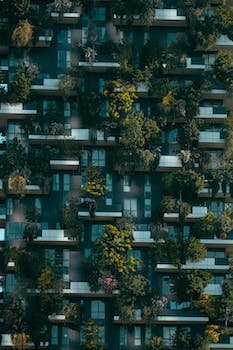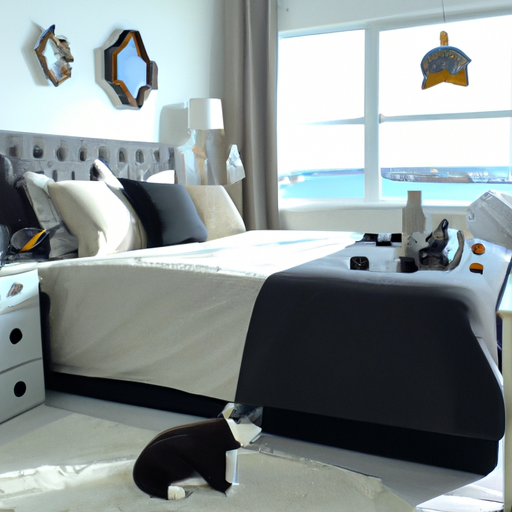Integrating Pet-Friendly Spaces in Modern Complex Designs
The role of design in creating a modern complex that’s perfect for pets is an essential aspect of contemporary architecture and urban planning. As the number of pet owners continues to rise, the demand for pet-friendly spaces in residential and commercial complexes has become a significant consideration for architects, designers, and developers. Integrating pet-friendly spaces in modern complex designs not only enhances the quality of life for pet owners and their furry companions but also contributes to the overall appeal and marketability of the property.
One of the primary factors to consider when designing a pet-friendly complex is the provision of ample outdoor spaces. Green areas, parks, and walking trails are essential for the well-being of pets, particularly dogs, who require regular exercise and socialization. These spaces should be easily accessible and safe for both pets and their owners, with features such as secure fencing, designated off-leash areas, and proper waste disposal facilities. Additionally, incorporating natural elements such as trees, shrubs, and water features can create a more inviting and stimulating environment for pets and their owners to enjoy.
Another crucial aspect of integrating pet-friendly spaces in modern complex designs is the consideration of indoor amenities. Pet owners often face challenges in finding suitable accommodations that cater to the needs of their pets, particularly in multi-unit residential buildings. Designing pet-friendly units with features such as durable flooring materials, easy-to-clean surfaces, and soundproofing can significantly improve the living experience for both pets and their owners. Furthermore, providing communal spaces such as pet washing stations, grooming areas, and even indoor playrooms can enhance the overall appeal of the complex for pet owners.
In addition to the physical design elements, the integration of pet-friendly policies and services is vital in creating a modern complex that’s perfect for pets. Establishing clear guidelines for pet ownership, such as breed and size restrictions, registration requirements, and pet etiquette rules, can help maintain a harmonious living environment for all residents. Offering pet-related services, such as dog walking, pet sitting, and veterinary care, can further contribute to the convenience and attractiveness of the complex for pet owners.
The benefits of integrating pet-friendly spaces in modern complex designs extend beyond the satisfaction of pet owners. Research has shown that the presence of pets can have a positive impact on mental health, social interactions, and overall well-being. By creating spaces that cater to the needs of pets and their owners, designers and developers can contribute to the promotion of healthier, happier, and more connected communities.
Moreover, pet-friendly complexes can also have a positive impact on the environment. By providing accessible green spaces and promoting responsible pet ownership practices, such as waste disposal and the use of eco-friendly pet products, these complexes can contribute to the overall sustainability of the urban landscape.
In conclusion, the role of design in creating a modern complex that’s perfect for pets is a multifaceted and essential aspect of contemporary architecture and urban planning. By integrating pet-friendly spaces, amenities, and policies in modern complex designs, architects, designers, and developers can cater to the growing demand for pet-friendly accommodations while enhancing the quality of life for pets and their owners. Furthermore, these pet-friendly complexes can contribute to the promotion of healthier, happier, and more sustainable communities, making them an attractive and valuable addition to the urban landscape.
Balancing Aesthetics and Functionality for Pet-Friendly Living

The role of design in creating a modern complex that’s perfect for pets is a delicate balance between aesthetics and functionality. As more and more people consider their pets as integral members of their families, the demand for pet-friendly living spaces has significantly increased. Architects and designers are now faced with the challenge of creating spaces that cater to the needs of both humans and their furry companions, without compromising on style and comfort.
One of the key aspects of designing a pet-friendly complex is ensuring that the materials used are durable and easy to maintain. Pets, especially dogs and cats, can be quite rough on surfaces, and their claws can cause significant damage to flooring, walls, and furniture. Therefore, it is essential to choose materials that can withstand the wear and tear caused by pets. For instance, hardwood floors with a high Janka hardness rating are more resistant to scratches and dents, making them an ideal choice for pet owners. Similarly, stain-resistant fabrics and materials for furniture and upholstery can help maintain the aesthetic appeal of the living space while ensuring that it remains functional for pets.
Another important consideration in designing a pet-friendly complex is the provision of ample outdoor spaces. Pets, particularly dogs, require regular exercise and socialization to maintain their physical and mental well-being. Incorporating green spaces, dog parks, and walking trails within the complex can greatly enhance the quality of life for pets and their owners. These outdoor spaces should be designed with safety in mind, including secure fencing, proper lighting, and designated areas for waste disposal.
In addition to outdoor spaces, indoor amenities tailored to the needs of pets can significantly contribute to a pet-friendly complex. For example, pet washing stations and grooming areas can be a convenient addition for pet owners, making it easier for them to maintain their pets’ hygiene without having to leave the complex. Moreover, incorporating soundproofing measures in the design of the building can help minimize noise disturbances caused by pets, ensuring a peaceful living environment for all residents.
The layout of individual living spaces within the complex should also be designed with pets in mind. Open floor plans with minimal obstructions can provide pets with ample space to move around and play, while also making it easier for pet owners to keep an eye on their furry friends. Additionally, incorporating pet-friendly features such as built-in feeding stations, pet doors, and easily accessible storage for pet supplies can greatly enhance the functionality of the living space for both pets and their owners.
Lastly, it is essential to consider the social aspect of pet-friendly living. Creating a sense of community among pet owners within the complex can greatly contribute to the overall satisfaction of residents. Organizing regular events such as pet meet-ups, training sessions, and educational workshops can help foster a sense of belonging and camaraderie among pet owners, while also providing valuable resources and support.
In conclusion, the role of design in creating a modern complex that’s perfect for pets involves striking a balance between aesthetics and functionality. By carefully considering the choice of materials, the provision of outdoor and indoor amenities, the layout of living spaces, and the fostering of a pet-friendly community, architects and designers can create a living environment that caters to the needs of both humans and their beloved pets. As the demand for pet-friendly living spaces continues to grow, it is crucial for the design industry to adapt and innovate to meet the evolving needs of modern pet owners and their furry companions.
Innovative Design Solutions for Pet-Friendly Modern Complexes
The role of design in creating a modern complex that’s perfect for pets is an essential aspect of contemporary architecture and urban planning. As more and more people choose to share their lives with pets, the demand for pet-friendly living spaces has grown exponentially. This has led to the development of innovative design solutions that cater to the needs of both humans and their furry companions. In this article, we will explore some of these design solutions and how they contribute to the creation of a modern complex that is perfect for pets.
One of the primary concerns when designing a pet-friendly complex is ensuring that the living spaces are comfortable and safe for both humans and animals. This involves considering factors such as flooring materials, ventilation, and noise control. For instance, using pet-friendly flooring materials such as vinyl or laminate can help prevent scratches and damage caused by pets’ claws. Additionally, proper ventilation systems can help eliminate pet odors and maintain a healthy living environment for all occupants. Noise control measures, such as soundproofing walls and floors, can also contribute to a more peaceful living experience for both humans and pets.
Another crucial aspect of designing a pet-friendly complex is providing ample outdoor spaces for pets to exercise and socialize. This can be achieved through the incorporation of dog parks, walking trails, and pet-friendly landscaping. Dog parks should be designed with separate areas for small and large dogs, as well as features such as agility equipment, water fountains, and waste disposal stations. Walking trails should be well-lit and easily accessible, with clear signage indicating pet-friendly routes. Landscaping should include pet-friendly plants and materials, as well as designated areas for pets to relieve themselves.
In addition to outdoor spaces, modern complexes should also provide indoor amenities that cater to the needs of pet owners. These may include pet washing stations, pet-friendly common areas, and even pet daycare facilities. Pet washing stations can be a convenient addition to a complex, allowing residents to easily clean their pets after a walk or play session. Pet-friendly common areas can provide a space for residents and their pets to socialize and relax, while pet daycare facilities can offer a valuable service for busy pet owners who may need assistance with pet care during the day.
Another innovative design solution for pet-friendly complexes is the incorporation of smart technology. This can include features such as pet monitoring systems, automated pet feeders, and even pet doors that can be controlled remotely. These technologies can help pet owners keep an eye on their pets while they are away from home, ensuring their safety and well-being.
Lastly, it is essential to consider the needs of pet owners when designing parking and transportation solutions within a modern complex. This may involve providing designated pet-friendly parking spaces, as well as ensuring that public transportation options are accessible and accommodating to pets. By considering these factors, designers can create a modern complex that is not only visually appealing but also functional and comfortable for both humans and their pets.
In conclusion, the role of design in creating a modern complex that is perfect for pets involves a multifaceted approach that considers the needs of both humans and animals. By incorporating pet-friendly materials, outdoor spaces, indoor amenities, smart technology, and transportation solutions, architects and urban planners can create innovative living spaces that cater to the growing demand for pet-friendly accommodations. As society continues to recognize the importance of pets in our lives, it is crucial that we continue to develop design solutions that promote a harmonious coexistence between humans and their furry companions.
Q&A
Question 1: What are the key design elements to consider when creating a modern complex that’s perfect for pets?
Answer 1: The key design elements to consider include pet-friendly flooring, ample green spaces for exercise and play, designated pet relief areas, pet washing stations, soundproofing to minimize noise, and easy access to pet-friendly amenities such as parks and pet stores.
Question 2: How can designers ensure the safety and comfort of pets in a modern complex?
Answer 2: Designers can ensure safety and comfort by incorporating secure fencing around outdoor areas, using non-toxic materials in construction, providing proper ventilation and temperature control, creating separate spaces for larger and smaller pets, and including pet-friendly furniture and fixtures.
Question 3: How can design contribute to the overall well-being of pets in a modern complex?
Answer 3: Design can contribute to pet well-being by providing spaces that encourage physical activity, socialization, and mental stimulation, such as agility courses, pet playrooms, and interactive toys. Additionally, incorporating biophilic design elements, such as natural light and greenery, can create a calming environment for pets.
Conclusion
In conclusion, the role of design in creating a modern complex perfect for pets is crucial as it ensures the well-being, safety, and comfort of both pets and their owners. By incorporating pet-friendly amenities, materials, and layouts, designers can create spaces that cater to the unique needs of pets, promoting a harmonious coexistence between humans and their furry companions.


